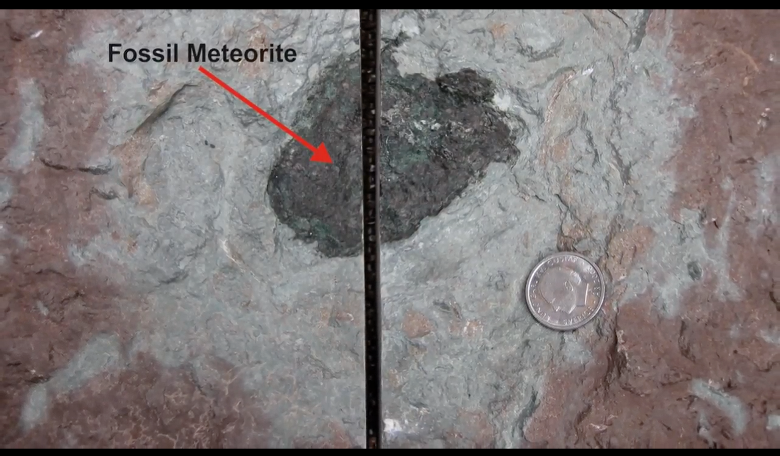An “extinct meteorite” that was discovered in Sweden last year is prompting a rethink of our current understanding of the history and development of the solar system, due to the rare and unknown minerals contained within this ‘meteorite dinosaur.’
The meteorite known as Österplana 065, was found by professor Birger Schmitz at Lund University in Sweden in a quarry outside of Lidköping. It was given the label "extinct" because it’s unusual mineralogy, which is different from all known groups of meteorites, points to an origin from a celestial body that was destroyed a very, very long time ago.
In addition to this intriguing discovery, research has also uncovered minerals from 43 meteorites that landed on Earth 470 million years ago but were subsequently captured in layers of slowly forming sedimentary rock, thus preserving their contents until now. The meteorites were discovered in Russia, east of St Petersburg and in a similar manner to Österplana 065, more than half of the mineral grains are from very rare or completely unknown meteorites.
The analysis of these types of ‘extinct’ meteorites has led to the idea that as this type of material no longer falls on Earth, the flow of meteorites may have been completely different 470 million years ago compared to today. This further suggests that something as yet unknown but of fundamental importance in the history of the solar system occurred nearly 500 million years ago to change the flow - an idea that Schmitz believes is very plausible.
"Based on 43 micrometeorites, which are as old as Österplana 065, our new study shows that back then the flow was actually dramatically different. So far we have always assumed that the solar system is stable, and have therefore expected that the same type of meteorites have fallen on Earth throughout the history of the solar system, but we have now realised that this is not the case", says Schmitz. “Our really surprising result is that it was completely different meteorites. The meteorite flux was dominated by other meteorites than those that are common on Earth today.”
This new study therefore highlights that it is possible to make highly detailed reconstructions of our solar systems past based on the analysis of these types of minerals and indeed a method of reconstructing the meteorite flow is currently under development at the specially established Astrogeobiology Laboratory in Lund.
"We can now recreate late history of not only the Earth but of the entire solar system. The scientific value of this new report is greater than the one last summer," says Schmitz.











